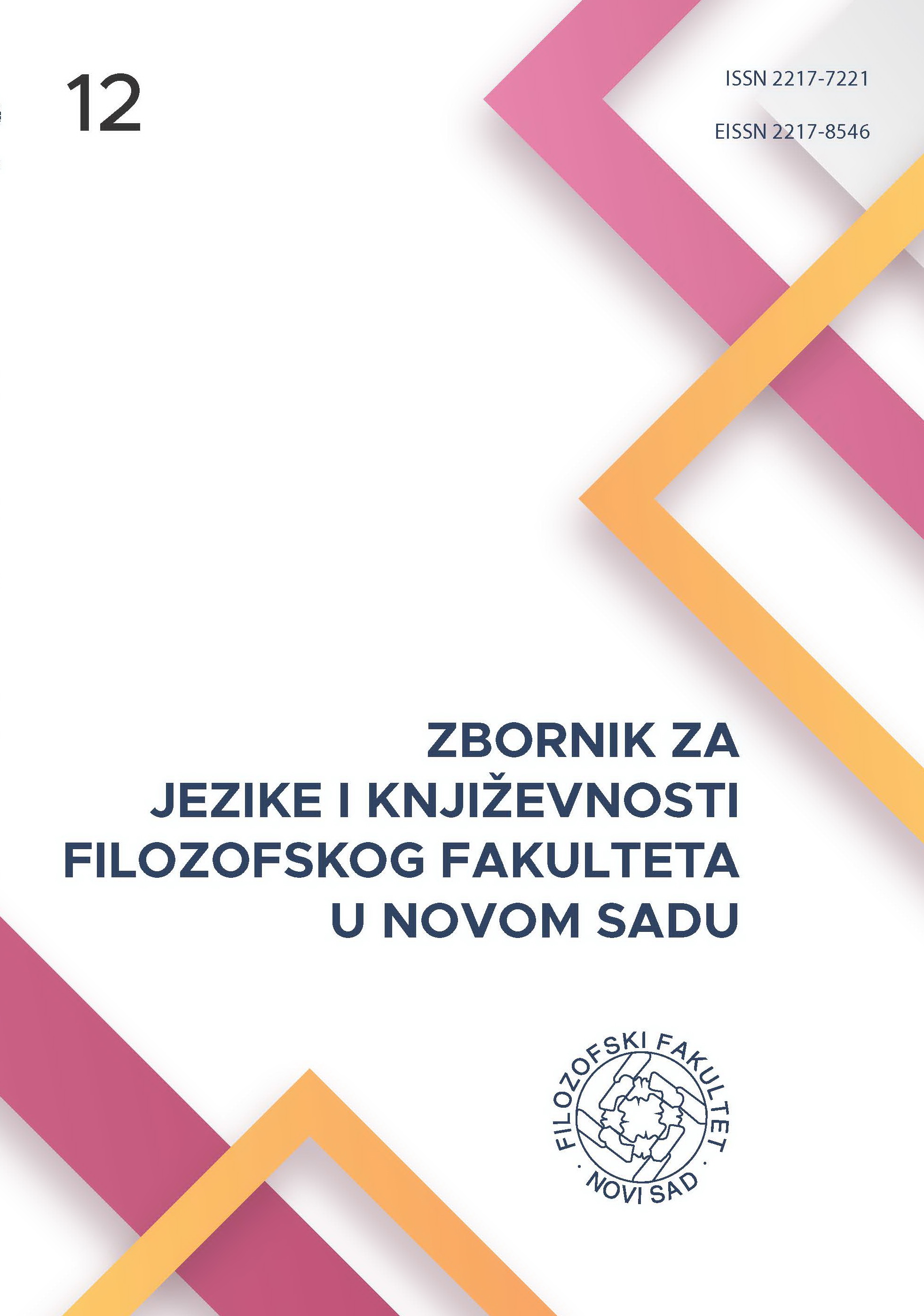PROSTOR KOJI PAMTI. POTRAGA ZA IDENTITETOM U ULICI MRAČNIH DUĆANA PATRIKA MODIJANA
Ključne reči:
Patrik Modijano, francuska književnost, Holokaust, kultura sećanja, prostor
Apstrakt
U ovom radu analiziram način prikazivanja drugogeneracijskog sećanja na Holokaust u Francuskoj kao i pitanje sećanja u korelaciji s prostorom u romanu Ulica mračnih dućana Patrika Modijana. Metodološke osnove rada u okviru kulture sećanja čine dela Marijen Hirš, Morisa Albvaksa i Todora Kuljića, a u okviru istraživanja prostora radovi Valtera Benjamina i Mišela de Sertoa. Povezanost problematike identiteta, sećanja, vremena i prostora u romanu čini mrežu neodvojivih tačaka u kojoj se jedni pojmovi određuju i tumače uz pomoć drugih.
Reference
Benjamin, W. (2005). Pasaże (Das Passagen-Werk, 1999). Tiedemann, R. (ured.) (prev. Kania I.). Kraków: Wydaw.
De Certeau, M. (2002). Invencija svakodnevnice (prev. Popović, G.). Zagreb: Naklada MD.
Halbwachs, M. (1969). Społeczne ramy pamięci (LesCadres sociaux de la memoire, 1925) (prev. Król, M.). Warszawa: Wydawnictwo Naukowe PWN.
Hirsch, M. (2012). The Generation of Postmemory Writing and Visual Culture After the Holocaust. New York: Columbia University Press.
Jergović, M. (2022). Patrick Modijano: Tihi čarobnjak. Preuzeto 20. 05. 2022, sa
https://www.jergovic.com/subotnja-matineja/patrick-modiano-tihi-carobnjak/
Kuljić, T. (2006). Kultura sećanja. Teorijska objašnjenja upotrebe prošlosti. Beograd: Čigoja.
Kusiak, J. (2013). Walter Benjamin i metodologia antropologicznego materializmu. Krzesanie dialektycznych iskier na metalowej głowie Ernsta Thälmanna. Praktyka teoretyczna, 2(8), 309‒332.
Martinov, V. (2021). Potraga za Dorom Bruder i „empatična distanca“ Patrika Modijana. Zbornik za jezike i književnosti Filozofskog fakulteta u Novom Sadu, 11(11), 57‒70. Preuzeto 15. 05. 2022, sa
https://zjik.ff.uns.ac.rs/index.php/zjik/article/view/2244/2259
Modijano, P. (2021). Ulica mračnih dućana (prev. Mirjana Uaknin). Novi Sad: Akademska knjiga.
Sendyka, R. (2007). Montaż rzeczywistości – o Pasażach Waltera Benjamina, Wielogłos, 1(1), 149‒157.
Uaknin, M. (2022). Ulica mračnih dućana, Politika. Preuzeto 10. 05. 2022, sa
https://www.politika.rs/articles/details/501854?fbclid=IwAR0KXQy2wHm4zmgL2a2Ehie-8Zu7pCNqM3ej3bMdz3vBsm2tW2orD0k0JPU.
Vervaet, S. (2020). Holokaust, rat i transnacionalno sećanje. Svedočanstvo iz jugoslovenske i postjugoslovenske književnosti (prev. Adriana Zahrijević & Aleksandar Pavović). Novi Sad: Akademska knjiga.
De Certeau, M. (2002). Invencija svakodnevnice (prev. Popović, G.). Zagreb: Naklada MD.
Halbwachs, M. (1969). Społeczne ramy pamięci (LesCadres sociaux de la memoire, 1925) (prev. Król, M.). Warszawa: Wydawnictwo Naukowe PWN.
Hirsch, M. (2012). The Generation of Postmemory Writing and Visual Culture After the Holocaust. New York: Columbia University Press.
Jergović, M. (2022). Patrick Modijano: Tihi čarobnjak. Preuzeto 20. 05. 2022, sa
https://www.jergovic.com/subotnja-matineja/patrick-modiano-tihi-carobnjak/
Kuljić, T. (2006). Kultura sećanja. Teorijska objašnjenja upotrebe prošlosti. Beograd: Čigoja.
Kusiak, J. (2013). Walter Benjamin i metodologia antropologicznego materializmu. Krzesanie dialektycznych iskier na metalowej głowie Ernsta Thälmanna. Praktyka teoretyczna, 2(8), 309‒332.
Martinov, V. (2021). Potraga za Dorom Bruder i „empatična distanca“ Patrika Modijana. Zbornik za jezike i književnosti Filozofskog fakulteta u Novom Sadu, 11(11), 57‒70. Preuzeto 15. 05. 2022, sa
https://zjik.ff.uns.ac.rs/index.php/zjik/article/view/2244/2259
Modijano, P. (2021). Ulica mračnih dućana (prev. Mirjana Uaknin). Novi Sad: Akademska knjiga.
Sendyka, R. (2007). Montaż rzeczywistości – o Pasażach Waltera Benjamina, Wielogłos, 1(1), 149‒157.
Uaknin, M. (2022). Ulica mračnih dućana, Politika. Preuzeto 10. 05. 2022, sa
https://www.politika.rs/articles/details/501854?fbclid=IwAR0KXQy2wHm4zmgL2a2Ehie-8Zu7pCNqM3ej3bMdz3vBsm2tW2orD0k0JPU.
Vervaet, S. (2020). Holokaust, rat i transnacionalno sećanje. Svedočanstvo iz jugoslovenske i postjugoslovenske književnosti (prev. Adriana Zahrijević & Aleksandar Pavović). Novi Sad: Akademska knjiga.




